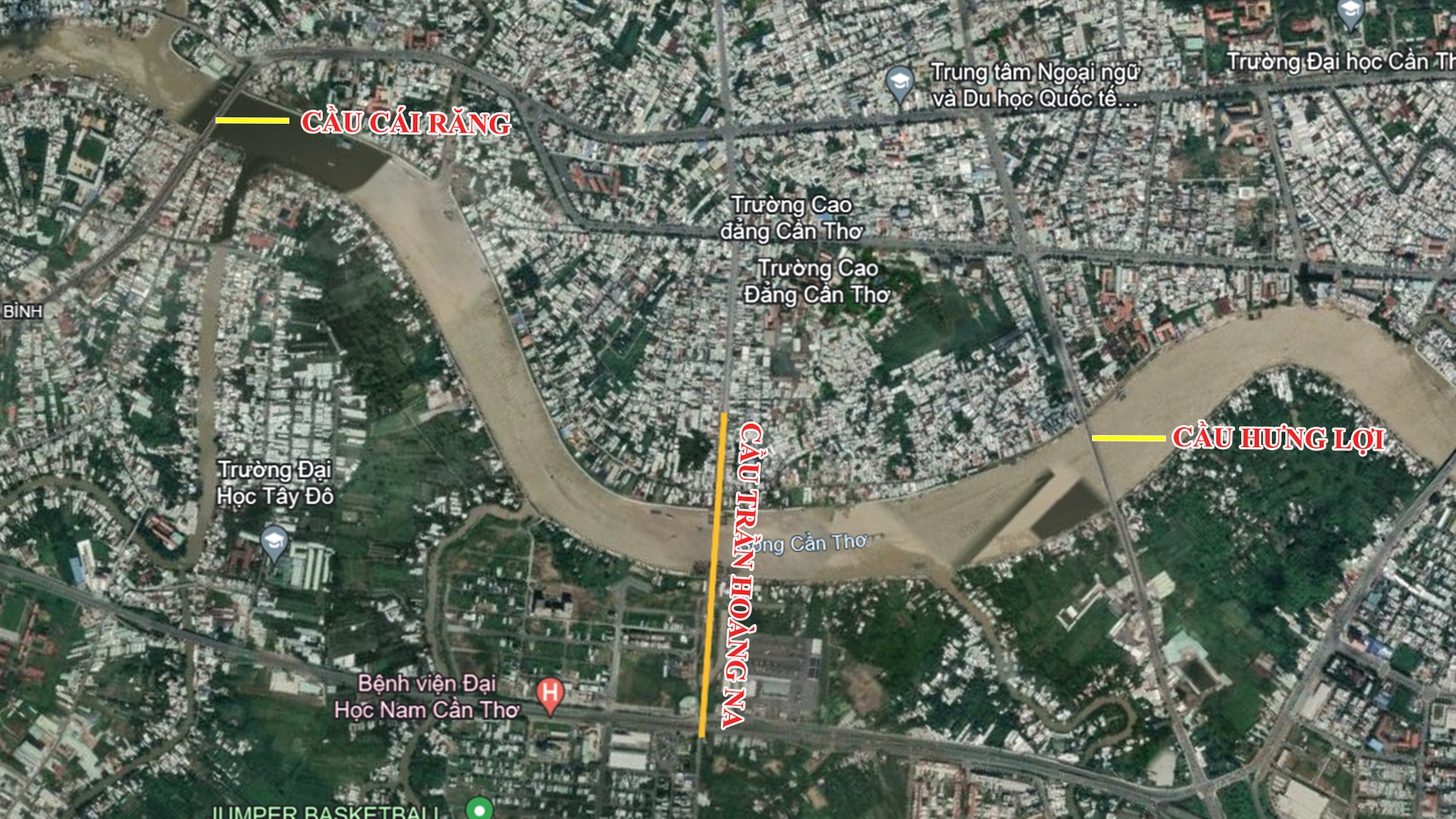
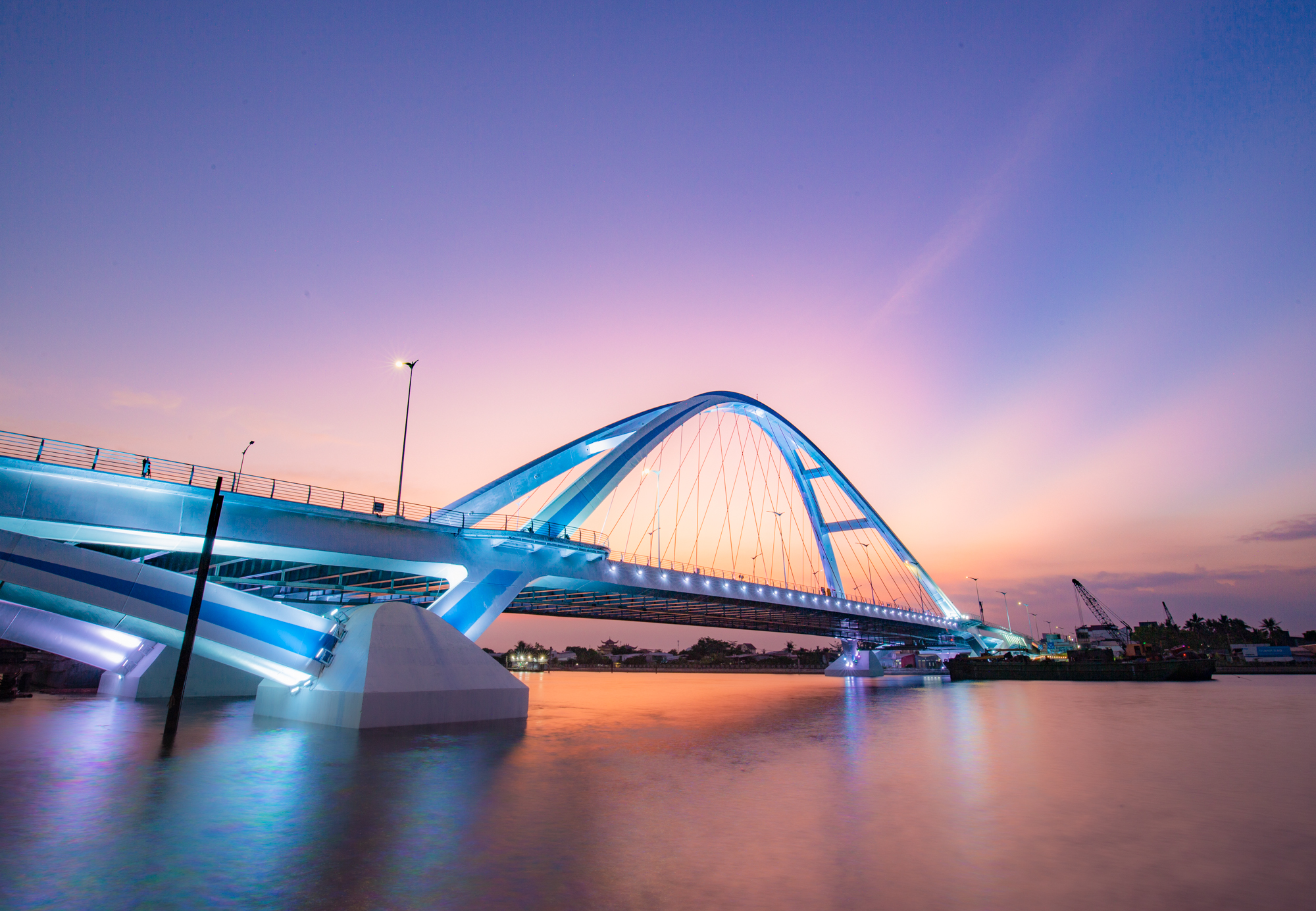
Tran Hoang Na bridge is located between Hung Loi bridge and Cai Rang bridge, started construction in September 2020, and expected to be completed after 22 months of construction. However, due to many reasons, the bridge was inaugurated and officially put into use on April 26, 2024.

Tran Hoang Na Bridge is a grade one traffic project with a scale of 4 lanes, 23 m wide, and a design speed of 60 km/h. The bridge is an arch bridge spanning the Can Tho River, connecting Ninh Kieu District and Cai Rang District. The bridge has 3 steel-structured spans, the main span in the middle is 150 m long, and the two side spans are 49 m long. The total investment for construction is 791 billion VND.
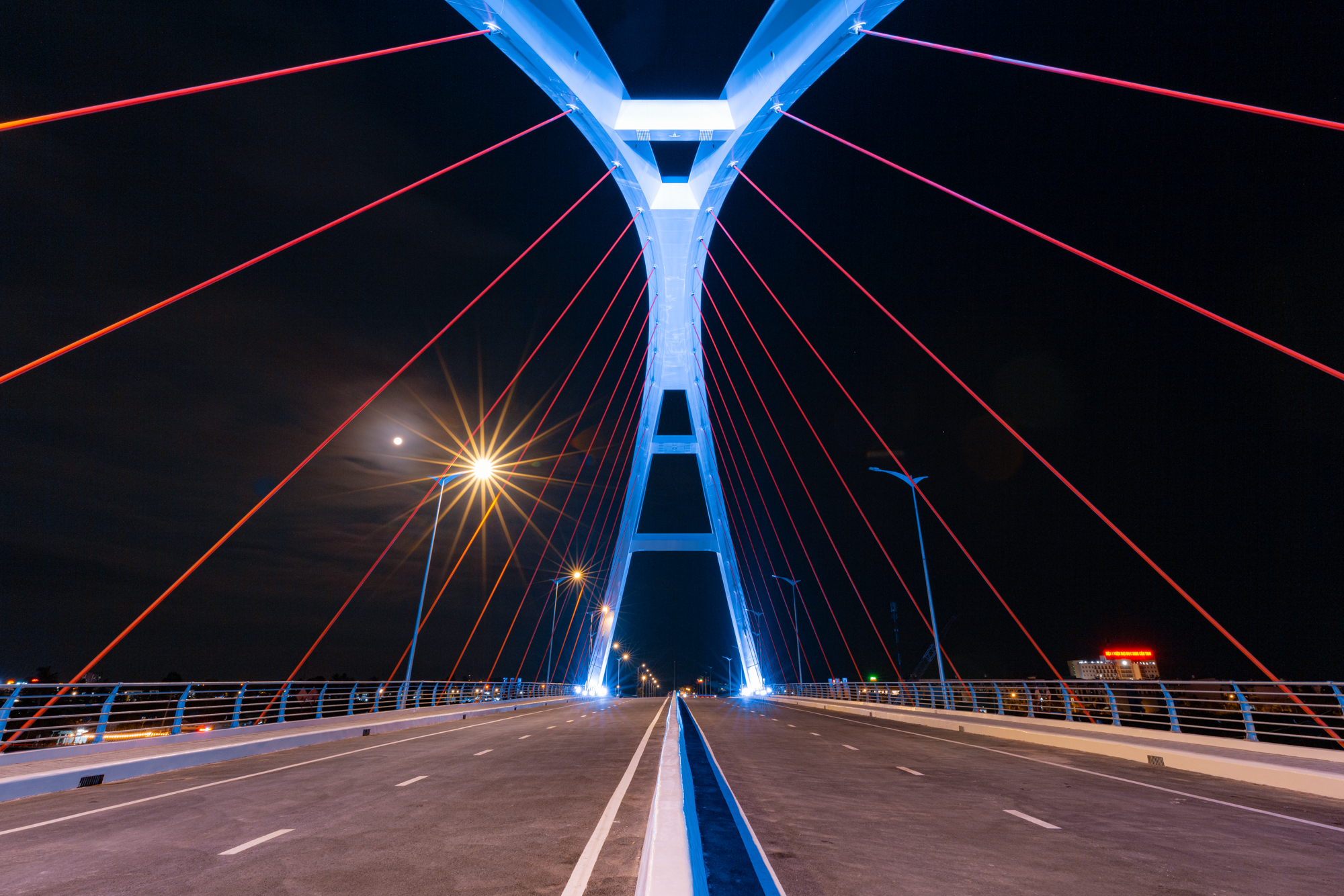
Tran Hoang Na Bridge has 38 cable bundles (type 73 and 91 strands) stretched from the two sides of the main steel arch to the bridge deck. The 4 steel arch legs have 32 sets of LED lights, each set consists of 2 lights, with a total of 144 lights. In addition, there is a lighting system for the cable-stayed system, the main longitudinal beams on both sides of the bridge, and the piers under the bridge deck….

When the sunset has just ended, the artistic lighting system makes Tran Hoang Na Bridge become sparkling. Besides, the system is also designed, programmed to automatically change colors with effects showing the characteristics of Can Tho in particular and the Mekong Delta region in general.
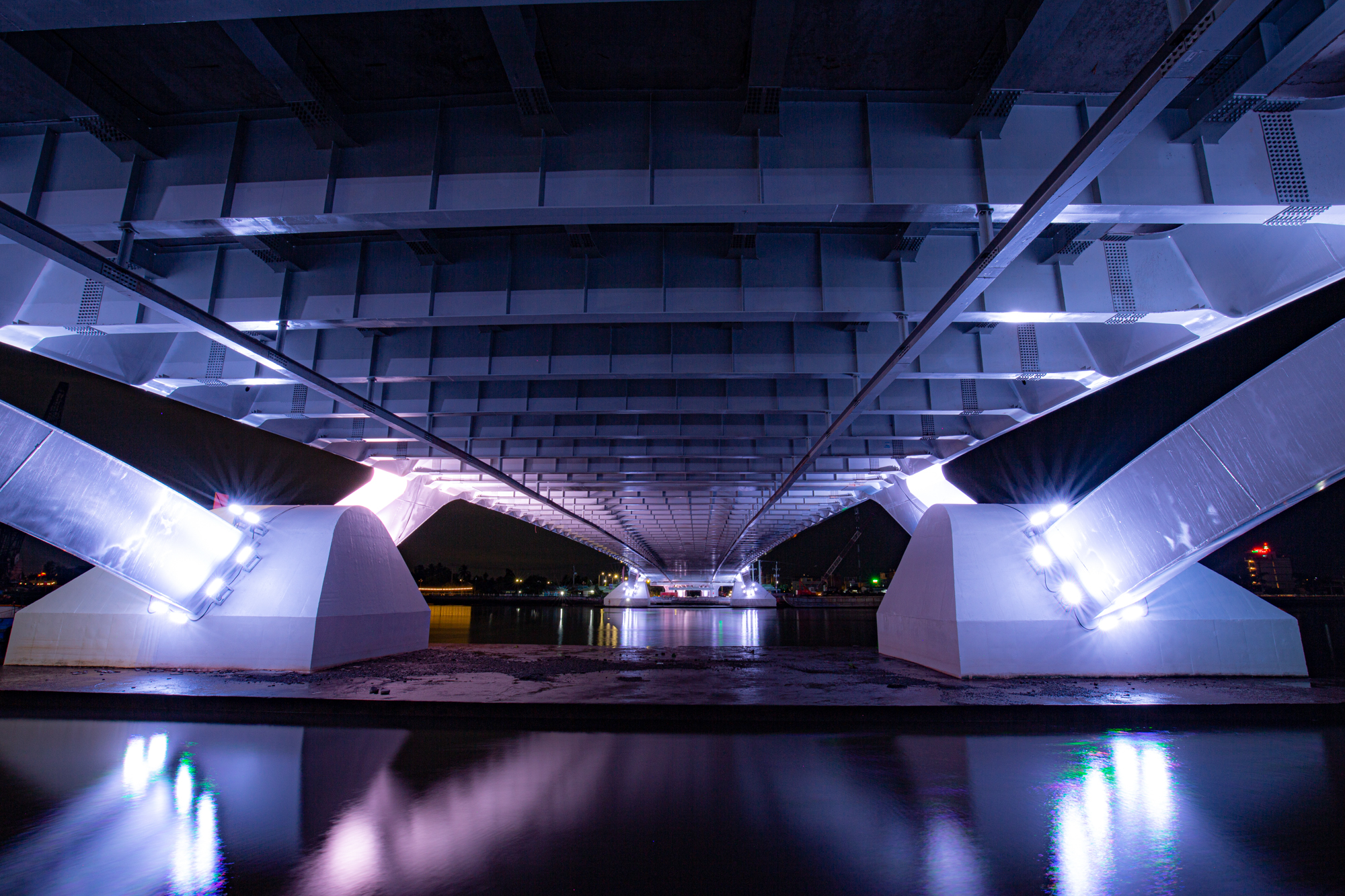
The 3 main bridge spans are made from 4,000 tons of steel imported from Korea. The horizontal, vertical, and arched steel beams were cast at 3 factories in Dong Nai, Hung Yen, and were brought to the construction site for installation.

Tran Hoang Na bridge is the first bridge in the city to collect opinions on architectural solutions that both ensure the function of water and land traffic and bring in local landscape architecture.
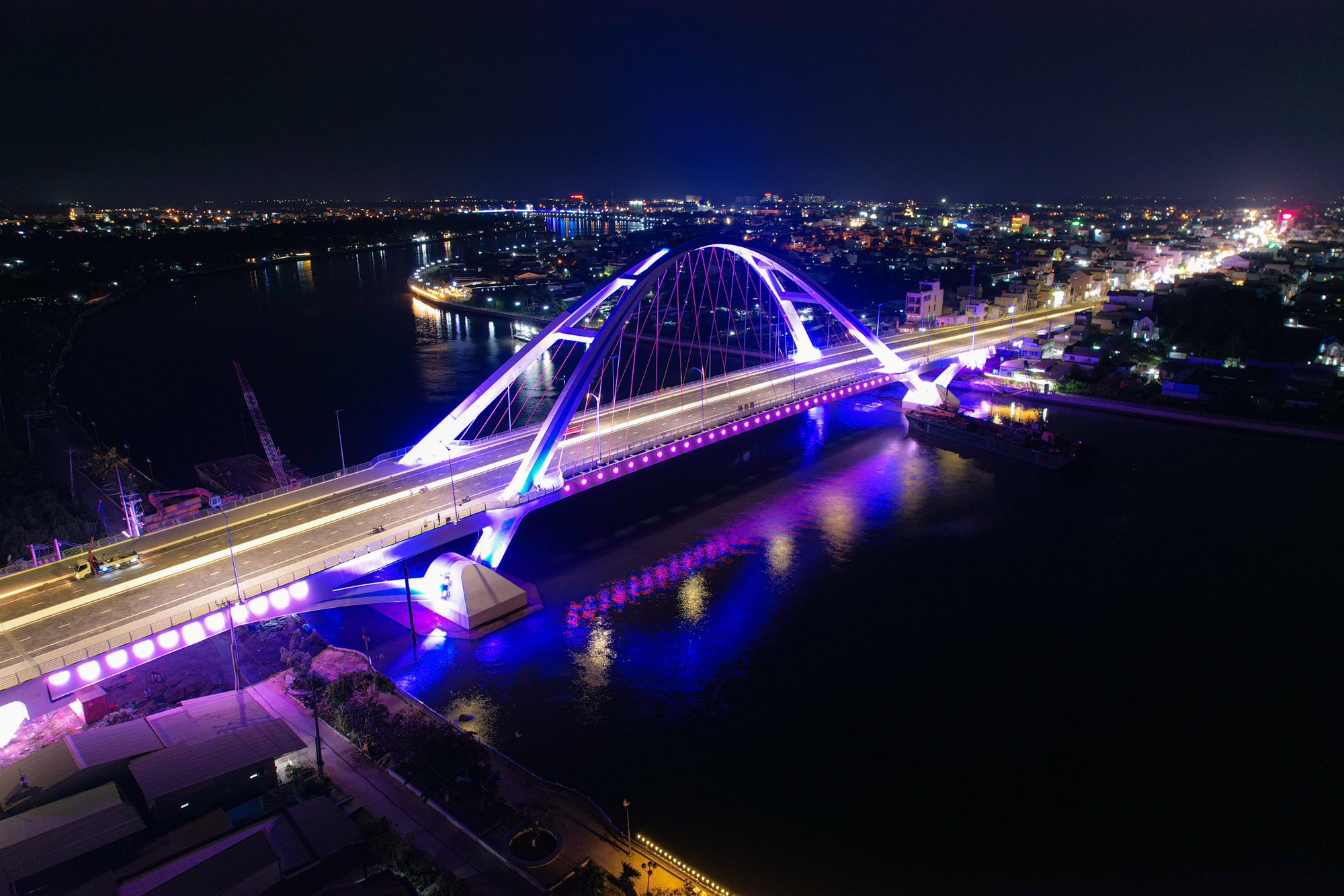
Tran Hoang Na Bridge, together with the Southeast embankment projects of the city, and the upgrading of Ninh Kieu bridge help increase the drainage capacity of the central area and connect the center with less flooded areas in the surrounding areas, contributing to protect nearly one million people from flooding on high tide days.
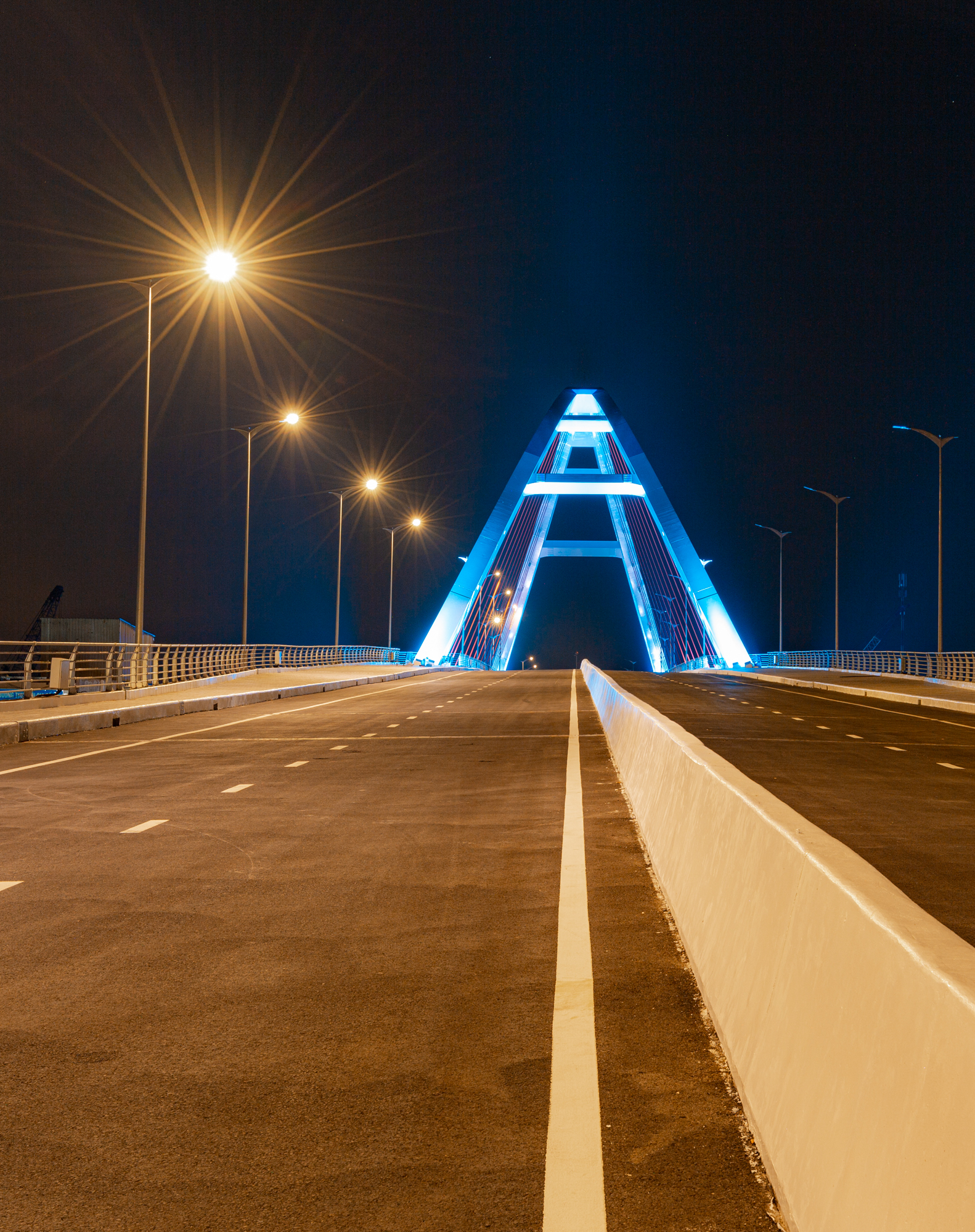
This is the 5th bridge across the Can Tho River and is also a key project, playing a very important role in the socio-economic development of the city. The project helps to shorten the travel time between the two districts of Cai Rang and Ninh Kieu, contributing to the development of the new urban area in the South of Can Tho. At the same time, through connecting with the traffic system, it will create favorable conditions for promoting, promoting tourism, and attracting investment.





![[Photo Essay]: Experts, Managers, and Businesses Unite to Forge a Path Towards Sustainable Green Industry](https://xe.today/wp-content/uploads/2025/07/z678592918-150x150.jpg)


![[Photo Essay]: Experts, Managers, and Businesses Unite to Forge a Path Towards Sustainable Green Industry](https://xe.today/wp-content/uploads/2025/07/z678592918-100x70.jpg)



